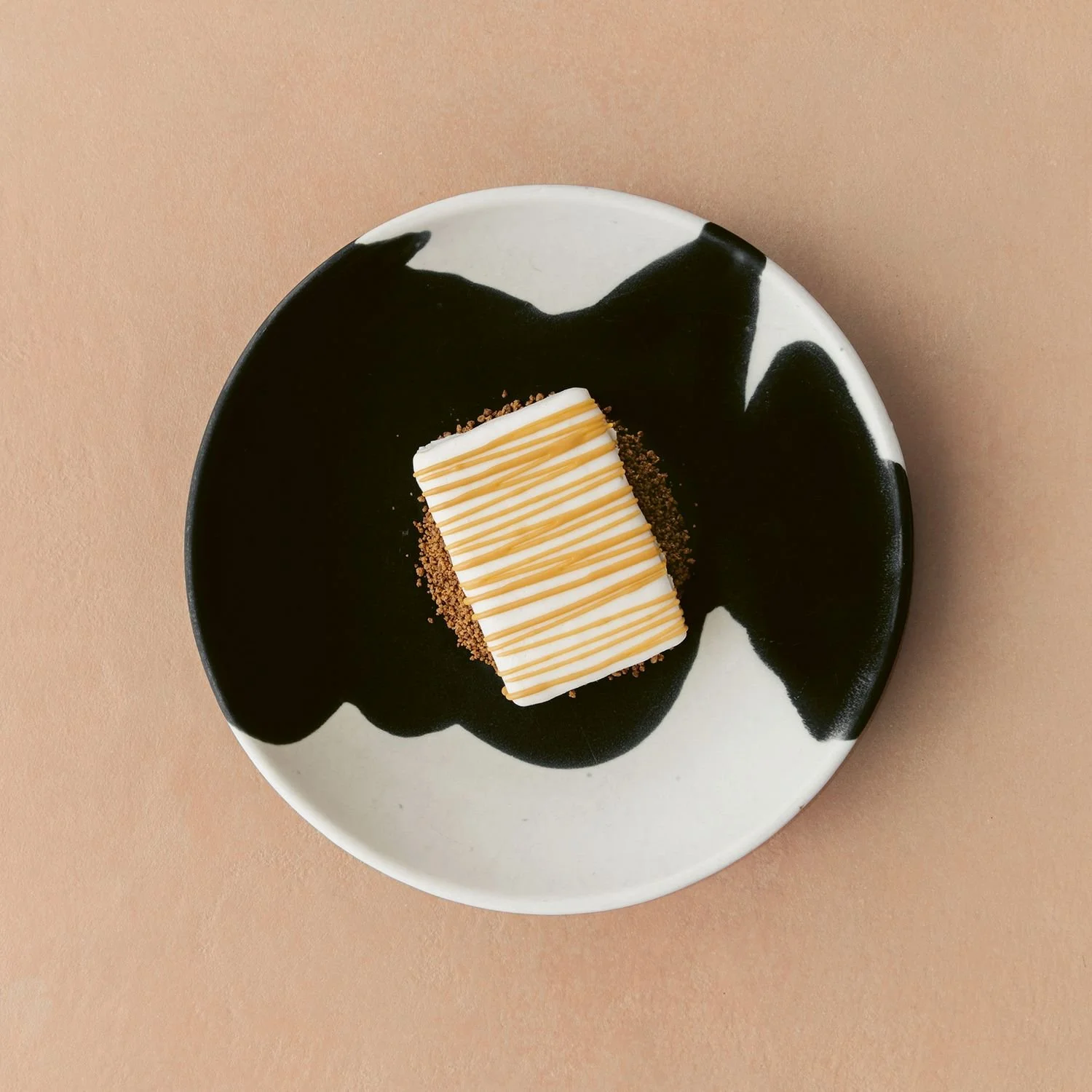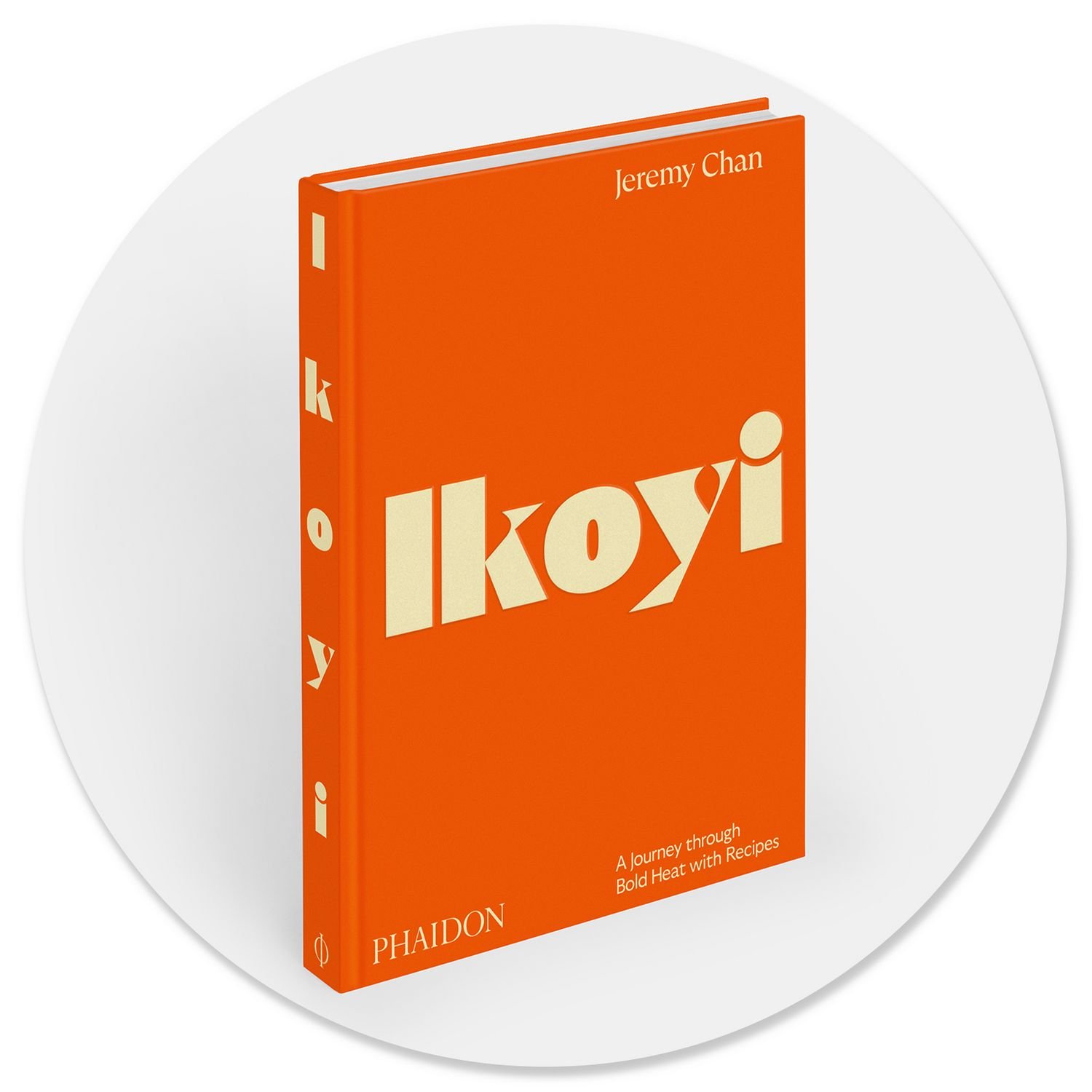Ikoyi Brings West African Cuisine to London's Food Scene
Messrs Jeremy Chan and Iré Hassan-Odukale. Photograph by Ms Maureen Evans, courtesy of Phaidon
London's culinary scene has a new addition in the form of Ikoyi, a restaurant serving up West African cuisine with a contemporary twist. Ikoyi's menu is inspired by the flavors and ingredients of West Africa, with a focus on showcasing the region's rich culinary heritage.
Led by head chef Jeremy Chan and backed by co-founders Iré Hassan-Odukale and his childhood friend, chef Yyemi Akinwolere, Ikoyi has quickly become a popular destination for foodies in the city. The restaurant's unique blend of West African ingredients and modern techniques has earned it a Michelin star and a reputation for being one of London's most exciting new restaurants.
The menu at Ikoyi features dishes such as grilled octopus with smoked scotch bonnet and lamb ribs with African spices and buttermilk. The restaurant also offers a tasting menu, allowing diners to sample various dishes and flavors.
In addition to its delicious cuisine, Ikoyi boasts a stylish and contemporary interior design. The space features a mix of African-inspired artwork, modern furnishings, and soft lighting, creating an inviting and sophisticated atmosphere.
Ikoyi is a must-visit for anyone looking to explore the diverse and exciting culinary offerings of London's food scene.
Following their move to 180 Strand, head chef Jeremy Chan and co-founder Iré Hassan-Odukale are giving foodies a glimpse into the world of Ikoyi with a new book. Published by Phaidon on April 13, the book features essays on the restaurant's philosophy of spice, creativity, and friendship, as well as some of its signature recipes.
Get a taste of what Ikoyi has to offer with a few of our favorite recipes from the book below.
ikoyilondon.com
01.
Plantain, smoked scotch bonnet and raspberry
Photograph by Ms Maureen Evans, courtesy of Phaidon
INGREDIENTS
For the smoked scotch bonnet oil
700g pierced red chilies
75g pierced scotch bonnet chilies
900g halved shallots
Grapeseed oil for coating
100g smoked paprika
1.5kg rapeseed (canola) oil
For the smoked scotch bonnet emulsion
6g fine salt
65g egg yolks
8g Dijon mustard
30g apple cider vinegar
100g house pickle (see below)
For the raspberry salt
600g freeze-dried raspberry powder
50g ground cinnamon
20g ground cloves
100g paprika
20g fine salt
For the plantain flour
300g coarse white corn grits
75g sorghum flour
112g tapioca starch
37g rice flour
8g fine salt
3g ground cloves
5g paprika
3g Cameroon chili powder
To finish
1 ripe yellow plantain
50g buttermilk
2kg grapeseed oil for deep-frying
Fine salt
METHOD
To make the smoked scotch bonnet oil
Lightly coat the chilies and shallots in grapeseed oil, then place in an even layer over a very hot grill. Leave them to heavily char, turning once to cook on both sides. Transfer the charred chilies and shallots into a deep gastronorm, cover the container with cling film, then leave to soften for 2 hours.
Once softened and cooled, finely chop the chilies and shallots, then transfer them into a vacuum-seal bag with the smoked paprika and rapeseed (canola) oil. Cold-infuse the oil for 48 hours in the fridge before straining through a muslin cloth. Store the oil in an airtight container in the fridge and use it within one month.
To make the smoked scotch bonnet emulsion
Blitz the salt, egg yolks, mustard, and vinegar in a food processor until a coherent paste forms. Emulsify the egg mixture by slowly adding 375g of the smoked scotch bonnet chili oil. Scrape down the sides of the blender, then add half of the house pickle.
Continue emulsifying with another 375g of the smoked scotch bonnet chili oil, followed by the second half of the house pickle. Store the emulsion in an airtight container in the fridge and use within one week.
To make the raspberry salt
Blend all the ingredients together in a spice grinder to form a fine powder. Pass the powder through a fine sieve, then store in an airtight container and use within six months.
To make the plantain flour
Place all the ingredients in a blender and blitz for 2 minutes. Store the powder in an airtight container and use within one month.
To finish
Peel the plantain and slice the tips at a sharp angle. Lay the plantain curved side up and slice into four horizontal portions, each 1cm (½ in) thick. Trim the plantain portions to 13cm (5in) long and carve so that each edge of the plantain is clean.
Brush the plantain slices with the buttermilk and place into the plantain flour. Carefully spread a layer of flour over the plantain's exposed side, ensuring not to create clumps with the buttermilk. Remove the plantain slices from the flour and set aside on a piece of greaseproof paper.
Heat the oil to 170°C (338°F) in a deep pot and fry the plantain slices for 4 minutes until golden.
Season with fine salt, then scatter 5g raspberry salt over each piece.
Take out four room-temperature plates and place a plantain slice in the center of each. Make a quenelle of the smoked scotch bonnet emulsion to the left of the plantain, then serve.
02.
Ikejime trout and gola pepper
Photograph by Ms Maureen Evans, courtesy of Phaidon
INGREDIENTS
For the trout
1 × 4kg Ikejime trout
Citrus fish cure (see below), for sprinkling
For the fermented scotch bonnet and citrus dressing
120g red bell pepper
60g lacto-fermented scotch bonnet chillies (see below)
30g lemon juice
440g aged mirin
40g honey
80g palm wine
400g white soy sauce
300g cold-brew dashi (see below)
40g kombu
40g dried porcini mushrooms (ceps)
20g sudachi juice
8g grated Buddha’s hand lemon zest
40g orange juice
40g grated yuzu zest
12g katsuobushi
To finish
Gola peppercorn oil (see below)
METHOD
To age the trout
Gut the trout and remove the gills and head. Clean the fish extremely well with paper towels to ensure no blood or residual slime is left on the fish. Leave the fish to age for five days at 2°C (36°F).
To make the fermented scotch bonnet and citrus dressing
Put the red pepper into a blender with the fermented scotch bonnet and lemon juice and blend to combine, then set aside.
Place the mirin, honey and balm wine in a saucepan and reduce by 15 per cent.
Preheat a water bath to 60°C (140°F). Vacuum-seal the reduction with the white soy, cold-brew dashi, kombu and mushrooms, and cook for 1 hour in the water bath. Cool to room temberature, then transfer to a bowl and add all the remaining ingredients.
Leave to age for 48 hours, then strain through a muslin cloth. Store the dressing in an airtight container in the fridge until needed and use within one month.
To cure the trout
Once the trout has been ageing for five days, fillet both sides of the trout and remove the belly, keeping it for another use. Skin the fillets and delicately apply the citrus cure to both sides of the fish. Leave for 10 minutes, then brush off the cure until the surface of the trout is very dry.
Slice out the pin bones on either side of the spine. Repeat with a second cut to remove the bloodline of the trout. Reserve the thickest part of the loin for this dish (about 80g), and use the rest of the fish for another recipe. Store the trout on a wire rack in the fridge and use within three days.
To finish
Slice the trout loin horizontally into eight pieces (two per person). Brush the trout pieces with the dressing and leave for 5 minutes before arranging on chilled plates. Glaze each piece with a few drops of gola oil and some of the dressing just before serving.
03.
Ogbono and Sicilian mango
Photograph by Ms Maureen Evans, courtesy of Phaidon
INGREDIENTS
For the Sicilian mango parfait
600g mango flesh
1.2kg whipping cream
225g egg yolks
200g caster (superfine) sugar
15g ground turmeric
270g glucose
17.5g gelatine sheets
Iced water
For the ogbono caramel
15g ogbono seeds
400g caster (superfine) sugar
200g butter, cubed
1kg whipping cream
30g smoked salt
For the citrus cream glaze
160g mandarin juice
800g buttermilk
600g crème fraîche
30g grated yuzu zest
300g icing (confectioners’) sugar
For the sorghum bone marrow crumb
150g sorghum flour
7g smoked salt
100g light brown sugar
250g plain (all-purpose) flour
5 eggs
1kg whole milk
200g bone marrow
To finish
Eight slices of fresh Sicilian mango
Smoked salt
METHOD
To make the Sicilian mango parfait
In a blender, blend the mango flesh with 200g of the whipping cream for 1 minute. In a separate bowl, whip the remaining cream to soft peaks.
In a stand mixer, whisk the egg yolks with the sugar, turmeric and glucose for 6 minutes. Transfer to a bain-marie and cook until the mixture reaches 82°C (180°F).
Bloom the gelatine in iced water.
Transfer the mango cream to a saucepan over a low heat. Remove the gelatine from the water and add it to the pan, letting it gently melt into the mango cream.
Fold the mango cream base into the egg-yolk mixture. Once combined, pour into a siphon.
Charge the siphon once and pipe the parfait mixture into 12 rectangular moulds 7.5 x 10cm (3 × 4in). Tap the moulds, then smooth over with a palette knife.
Cover the moulds with a tray, then wrap in cling film. Leave to set in the freezer overnight. store the parfaits in an airtight container in the freezer and use within one month.
To make the ogbono caramel
Preheat the oven to 170°C/340°F/gas mark 3½. Place the ogbono seeds into a roasting tray and roast for 25 minutes until very nutty and dark. Blitz to a fine powder.
In a saucepan, combine the sugar with 50g water and cook until a dark caramel forms. Slowly add the butter in pieces, followed by the cream. Cook the caramel and whisk until smooth and homogenous.
Remove the caramel from the heat, then add the ogbono powder and smoked salt. Whisk well. Store the caramel in squeezy bottles at room temperature and use within three days.
To make the citrus cream glaze
Pass the mandarin juice through a strainer, then place into a blender with all the other ingredients. Blend for 1 minute, then pass through a chinois. Store the cream in an airtight container in the fridge and use within one week.
To make the sorghum bone marrow crumb
Preheat the oven to 140°C/275º F/ gas mark 1. In a bowl, whisk all the ingredients together until very smooth. Lightly grease a non-stick frying pan and fry the batter in an even layer over a low heat to make thin crêpes. Place the crêpes on flat baking sheets and roast for 30 minutes. Once cool enough to handle, chop the crêpes into a crumb. Store the crumb in an airtight container in the freezer and use within one week.
To finish
Remove four parfaits from their moulds and place on a wire rack positioned over a flat gastronorm. Pour 100g of the citrus cream glaze over the parfaits until they are fully covered, tapping the tray so that the cream falls smoothly over the edges. Return the partaits to the freezer for 30 minutes to set.
Remove them from the freezer and repeat the process with another 100g of the citrus cream glaze. Hold the parfaits in a chiller set to -9°C (16°F) for up to 3 hours.
Take out four pre-chilled bowls and place a spoonful of the sorghum crumb into each one. Slash the parfaits horizontally with the ogbono caramel. sprinkle the mango slices with smoked salt and place two slices in each bowl on top of the crumb, followed by the partaits. Serve.
Image courtesy of Phaidon





